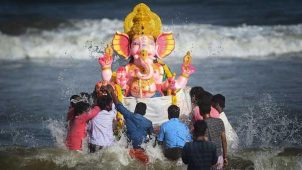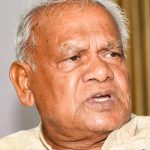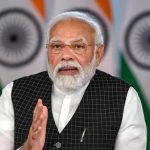The John Chau Episode Shows India’s Internal Security Is Porous hindustantimes.com
The unlawful, and fatal, expedition of a young American evangelist adventurer to a remote island that is home to the world’s last known pre-Neolithic tribe has highlighted India’s lax internal security controls and the threat to endangered indigenous communities from interlopers. The episode also casts an unflattering light on the ministry of home affairs (MHA), which, to cover up its lapses, has sought to obscure the truth.
Although lionised as a martyr in the US evangelical media, John Allen Chau was a wilful intruder. He trespassed on a prohibited island to impose his religion on a tiny, highly endangered tribe whose seclusion and privacy are legally protected. Worse still, his repeated intrusions into their peaceful, self-contented world might have exposed the Sentinelese — with no resistance to outsiders’ common diseases and already on the brink of extinction — to deadly pathogens. One crazed man’s conduct may have put an entire tribe’s survival at risk.
On his first intrusion into their North Sentinel Island, the Sentinelese, setting an example for the so-called civilised world, did not subject Chau to Abu Ghraib-style torture or even detain him. Yet, undeterred by the tribe’s warning not to return, a recalcitrant Chau over the next two days repeatedly came back to the island, disparaging it as “Satan’s last stronghold”, according to his own diary notes, released by his mother. The son of a refugee father who fled China during the Cultural Revolution and converted to Christianity in the US, Chau described in his notes how he hid from Indian coastal patrols under cover of darkness to make his criminal forays into an island forbidden even to Indians and Indian forces.
The ease with which he broke Indian laws and evaded onshore and offshore checks is a sad commentary on India’s internal security. The Andaman and Nicobar (A&N) chain is a critical asset for India’s national security. Located just northwest of the Malacca Strait, the archipelago offers India control of a chokepoint that is China’s greatest maritime vulnerability.
A&N is also home to some of the world’s most endangered tribes. After the ravages of British colonial rule, when the archipelago’s aboriginal communities were systematically decimated, only some tribes still survive. But their member numbers are dwindling. For example, the Jarawas, one of the first tribes to fall prey to British excesses, are vanishing, in an example of how contact with outsiders can doom an indigenous community.
Read more
When Andaman & Nicobar islands’ Sentinelese tribe was filmed first
US tourist killed in Andaman: Police retreat after seeing tribe with bows and arrows
Chau, instead of applying for a missionary visa, abused India’s e-visa on arrival system for tourists by hiding his real purpose. He neither registered with the Foreigners Regional Registration Office nor sought the mandatory permission under the separate aborigine and forest protection laws before undertaking a mission he plotted through previous A&N visits. Yet, in isolated but militarily sensitive Andaman, no agency spotted the Chinese-looking American, although Chinese and Pakistanis need MHA’s clearance to be there.
In June, MHA lifted the requirement for foreigners to secure a Restricted Area Permit (RAP) to visit 29 A&N islands “in the interest of promoting tourism and [their] overall development”. The decision smacked of utter recklessness: About one-third of the 29 islands, including North Sentinel, are home to endangered tribes and not open to tourism or development under the aborigine law. RAP’s lifting implicitly emboldened Chau’s exploits, although foreigners, like Indians, still need special permission under the aborigine and forest acts to visit any tribal-reserved island.
Caught flat-footed by Chau’s forays, an embarrassed MHA contradicted the Andaman police to claim there was no evidence that he was on a mission to evangelize. Had Chau’s own detailed accounts of his motives and exploits not become public, the MHA’s misinformation would have prevailed. To cover its back, MHA now claims it lifted RAP for tribal-reserved islands, not for tourism, but to promote the “flow of people, particularly anthropologists and other researchers”, although no foreign expert is left on these tribes. Thanks to MHA’s ineptitude, we may never know if an external group funded Chau’s mission, which he ominously undertook just before Thanksgiving, an annual whitewash of white settlers’ mass killing of millions of Native Americans.
Internal security has historically been India’s Achilles’ heel — a frailty that invited repeated foreign invasions, plunder and subjugation. Yet, with India not fully absorbing the lessons of history, internal security has remained its paramount weakness under successive governments. Developments continue to expose glaring gaps in its internal security — from the entry of foreign extremists, criminals and illegal migrants to recurrent terrorist attacks, such as the recent strike on Nirankari worshippers with a Pakistan-made grenade.
With India’s internal security under increasing pressure, the endangered tribes’ future has grown even more uncertain.









Leave Your Comment